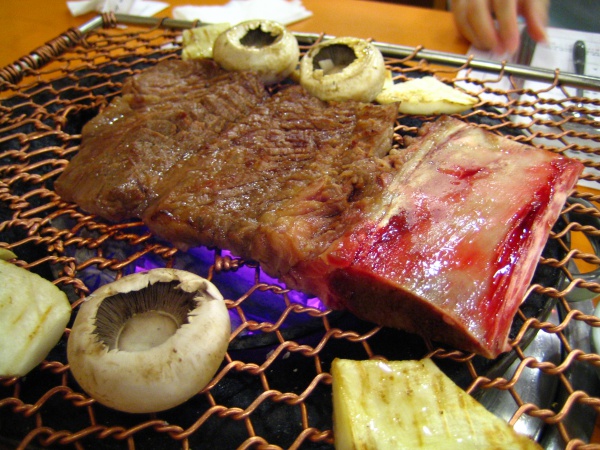Facts About Gui
In Korean cuisine, "gui" (also spelled "guee") refers to a type of grilled dish where the main ingredient is typically meat or fish, though it can also include vegetables or vegetarian options. The term "gui" originates from the verb "gupda" meaning "to grill."
At traditional Korean restaurants, meats are frequently grilled right at your table over charcoal, providing an interactive dining experience. This grilling is complemented by a variety of side dishes, known as "banchan" and individual bowls of rice. Once the meat is cooked, it's cut into bite-sized pieces, wrapped in fresh lettuce leaves, and enjoyed with rice, garlic, ssamjang (a flavorful dipping sauce), and other seasonings.
There are several types of gui dishes, categorized by their main ingredient:
1. Meat-based gui (Gogi gui):
- Bulgogi: Marinated beef
- Galbi: Ribs
- Samgyeopsal: Pork belly
- Dakgui: Grilled chicken
- Saengchi gui: Grilled pheasant
2. Offal gui (Naejang gui or Yang gui):
- Makchang gui: Grilled large pork intestines
- Gopchang gui: Grilled small intestines
3. Seafood gui:
- Saengseon gui: Grilled fish
- Seokhwa gui or Jogae gui: Grilled shellfish
- Jangeo gui: Grilled eel
- Godeungeo gui: Grilled mackerel
- Jeonbok gui: Grilled abalone
4. Vegetable and mushroom gui:
- Dubu gui: Grilled tofu
- Deodeok gui: Grilled deodeok (a mountain herb root)
- Beoseot gui: Grilled mushrooms
- Gim gui: Grilled seaweed
Each of these dishes has its own unique preparation methods and seasonings, offering a delightful variety of flavors and textures that make Korean cuisine so diverse and delicious.

 North Korea
North Korea